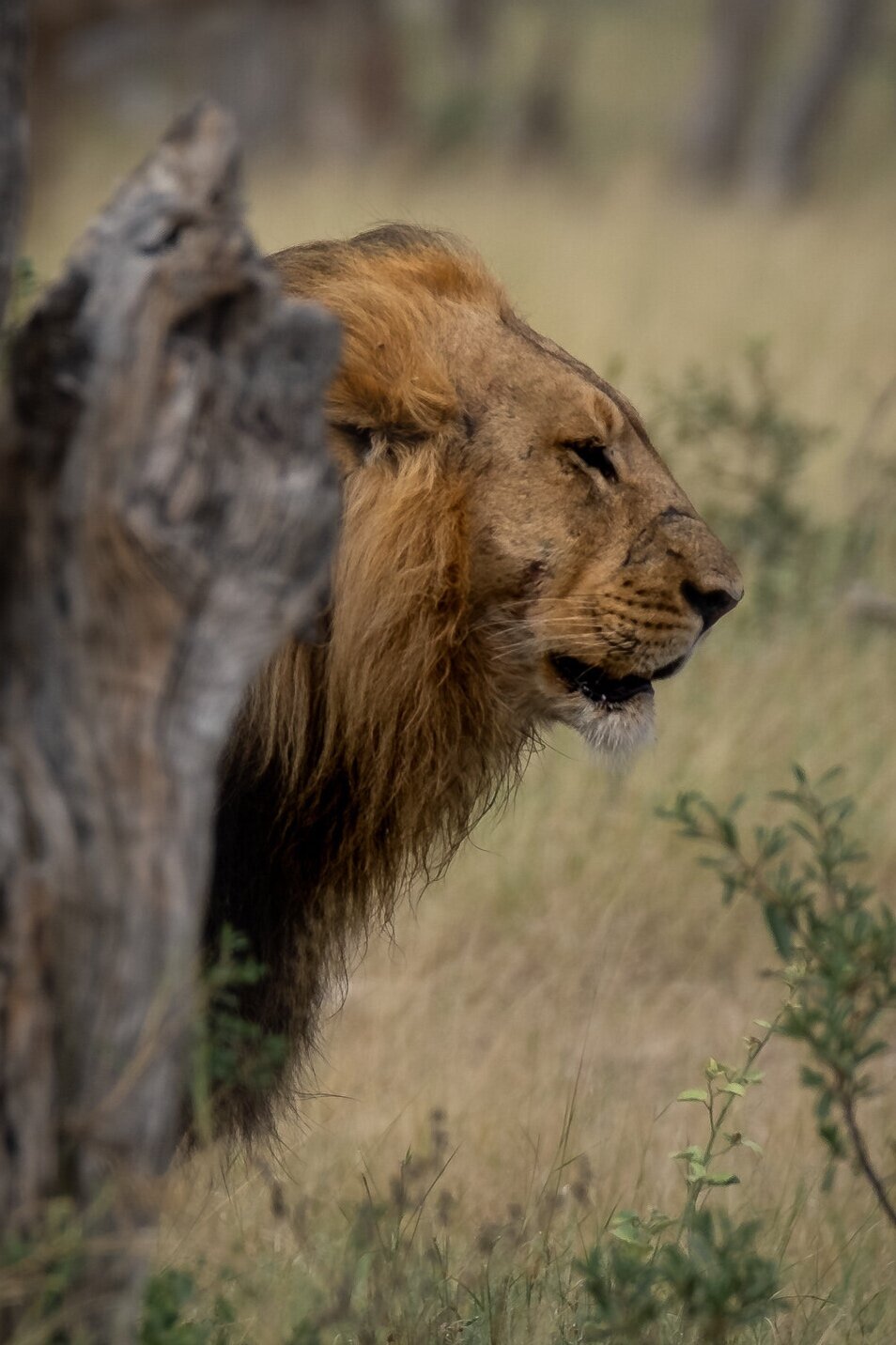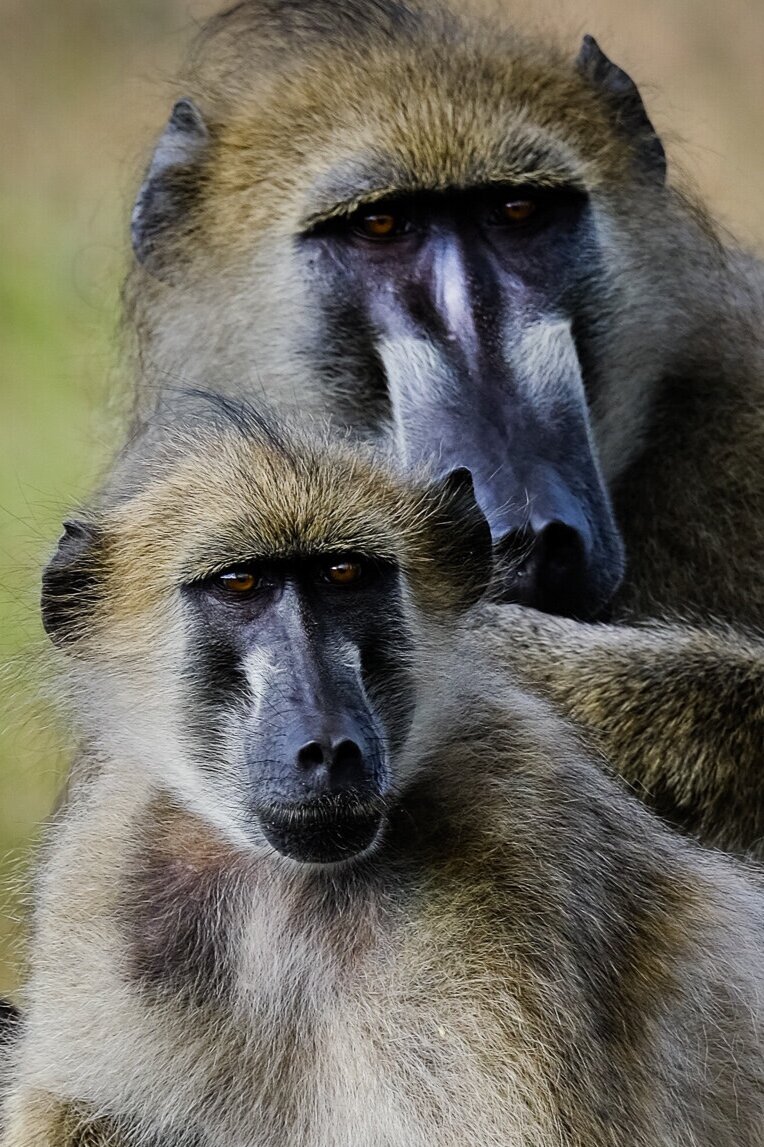This trip is going to learn me why a sick goat has to take care of itself.
As a very special year is behind us, I find myself looking back to the very start of the 2020, when Covid-19 still was local news from a market in China. Hildegunn and I have just left the boys at the Victoria international airport for their return to Norway, and now we have packed the car for a two-day trip to Binga to see if we can find some new business partners for Savannen.no. And I, I will of course bring my camera.
The dry season continues, as the rain is still just a dream in the local’s minds. Crops have failed yet another year in Zimbabwe and a meeting convoy, of trucks from the UN food program, reminds us about the difficult situation that the people of Zimbabwe have to deal with.
The road take us into the dry, hot landscape, and a dried out riverbank show fresh traces of antelopes around the miniature water puddles.
After a couple of hours drive under the burning sun, at the end of a long straight stretch, we can se a person in the distance. Getting closer it looks like its a hitchhiker, a hitchhiker in uniform.
It turns out it’s a female police officer. I bring the car to a halt. Hildegunn lower the window. The policewoman address us with a friendly; how are you? We have named the traffic police in Zimbabwe the fell good police. I always feel a bit tense as I drive in to a check point, but the police is always so friendly. Frases like, how are you, nice weather and have a safe trip is the routine, so there for; “The feelgood police”
We soon discover that the rest of the force is located in the shadow of a large tree by the road. The police officer asks us for a lift for her and her colleagues to the police station in Binga. A group of seven armed police officers move towards the car. I explain that we only have room for three officers in the back seat, and they gladly accept the offer, as they take place in the back seat, Hildegunn hands out bottles with water to the officers we have to leave behind in the burning heat.
We reach Binga late afternoon and find our lodge situated with a spectacular view over the great Lake Kariba. Lake Kariba is the world’s largest man-made lake. The Lake was filled from 1958 to 1963 and as a result many local tribes was displaced and generations of tribal history was flooded. As my eyes follows a local fishing boat setting out for the night shift I can see how the old forest still stretches its grey, dead branches above the water.
Before turning in for the night I check my weather app. If it starts to rain during the night, the road we drove down to the lake will turn into a river, leaving us stuck at the lodge. The weather app assured me that the rain season still is late and it is likely that we can drive up, back on the main road tomorrow. The plan is to head for a local tribe were the tradition of weaving the beautiful Binga baskets still is part of the daily life.
The next day we meet up with Johan, the local teacher and pastor, by the incredible huge Baobab tree. Johane has agreed to be our guide and translator as we do not speak the local language. Johane guides us a short walk through the dried out landscape to a family that weaves the beautiful Binga Baskets. We are to meet the grandmother, her daughter with her two children.
Entering the yard, or the area between the brick house and the shed were the goats and ducks are kept during night, we see the grandmother on a stool, giving a Binga basket the finishing touch.
They have prepared for this meeting with the Basket Lady from the far north, and the daughter comes carrying baskets to display for Hildegunn and Savannen.no (@savannen_no).
Even though this first and foremost is a business meeting, the family takes time to show us the craft. I feel blessed to have this very unique experience. The family is balancing a challenging time as the crop has failed three years in a row. Due to the dry weather, they have no equity and food supplies are low. In spite of this, they meet us as visitors in the most friendly matter and we exchange stories of life in extremely different worlds. They take a keen interest when Hildegunn shows them how the baskets is used as decorative elements in the nordic homes.
As Hildegunn continues the meeting, going in detail to build a lasting partnership, I grab my camera to take a closer look at the daily life in the rural areas of Binga. The family keeps a few animals for food. A couple of hens for eggs and a rooster for chickens. The rooster i constantly keeping an eye on me and follow me around the property on safe distance. It is not in my mind to think to challenge his position. The way he walks tells me that this rooster has more confidence than fear.
Over by the main building I look back to were the meeting is taking place in the shadow of a large three. It hits me how well the trees are adapted to the dry hot weather. After years with minimal with rain, they still lok healthy and green. What an amazing “technology”, being able to attract, hold and make use of the minimal of water in the ground. It would be interesting to se a map of the rooting system.
The main building has three separate rooms, the rooms are naked with no furnitures nor any facilities like a sink or a cooking area. It is three open rooms with a couple of mattresses spread out. The house rooms the story of a family making the best of what they have.
There is a small area were they grow vegetables. It is not more than approximately twelve square meter, and sharp branches and wire leftovers is surrounding the little garden to keep the sheeps on the outside.
Passing the others, I notice a goat struggling with keeping the balance. It is obvious that the animal is suffering. And later when I ask Johane, our translator, why they don’t put the goat out of its misery. The answer is as obvious as it is far from the reality of our own life. Family comes first. And as long as there is hope for recovery, the goat must take care of itself. If they were to slaughter the goat now when it is sick, the family could not use the meat.
Standing, observing the goat and then hearing the discussions in the meeting I realise how valuable this business relation is to the family. Through our travels to different African countries we have seen how large retailers enters the marked fills up a couple of containers, just to copy the craft and take the production to Asia. Of course they have to. It is impossible for a large corporation to deal directly with families with little to non production planning. Not to mention that the logistic situation in rural Africa is challenging and difficult to plan. To keep prices low and volume up, retailers prefer to have production in Asia where there are structure and resources to deliver cheep goods in large bulks. So even though Savannen.no is a really small business, I realise now how important the relation is to these families. And in my mind its the best way for a business relation to grow. Step by step, one container at the time, in a pace that is manageable for the families.
And when the youngest one gets to needy, it is good to have Hildegunn there to distract him with her hat.
After this emotional and inspiring meeting we feel confident that the work we do is important, not for the nation, but for the families, for the grandmother, the daughter and her two children. And hopefully for the goat, and that is more than good enough reason to keep going.























































